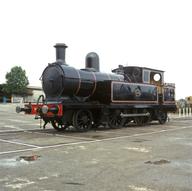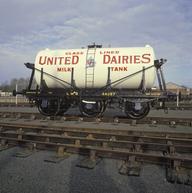

North Eastern Railway 20T wooden hopper wagon, 1902
- Made:
- 1902
Hopper wagon, No 4551, 20T wooden coal hopper wagon, built by the North Eastern Railway, 1902. Built to Diagram P7.
The North Eastern Railway (NER) handled a considerable mineral traffic, enjoying a virtual monopoly over coal traffic generated within the Durham and Northumberland Coalfields. Between 1902 and 1923, the NER's Shildon Wagon Works alone would build around 17,000 Diagram P7 20-ton wooden mineral hopper wagons like No 4551. After 1923, a slightly modified version was built by the NER's successor, the London & North Eastern Railway.
A ‘hopper’ wagon has tapered sides with doors in the floor to allow the contents to discharge completely by gravity. The basic design of the P7 is rooted in the history of North Eastern mining industry and the NER itself as it is essentially an enlargement of the horse and locomotive-drawn 4-ton chaldrons that passed along the waggonways and railways of the region. The wagons had manual brakes only.
While many railway companies left mineral wagon ownership in the hands of private owners such as collieries and merchants, the NER used its regional monopoly to encourage use of its own high-capacity hopper wagons, which – in theory – offered a pool of wagons that reduced train lengths, wagon deadweight and reduced the need to work specific wagons back to specific owners. Coal for domesatic use saw the company adopt a policy of franchising-out station sales to station masters as well as leasing facilities to merchants on condition that coal was received in the company's wagons.
Details
- Category:
- Locomotives and Rolling Stock
- Object Number:
- 1978-7093
- type:
- railway wagon
- credit:
- North Yorkshire Moors Railway




